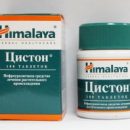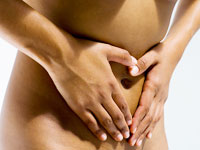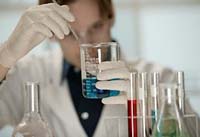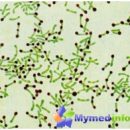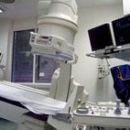Views of hysteroscopy
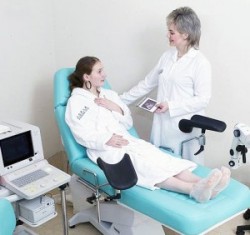
- Diagnostic. The purpose of such a procedure is to examine the uterine cavity, in particular, its inner surface to confirm or refute the presence of any pathological disorder. Tissue integrity Research does not violate.
- Surgical. Hysteroscopy of this species is used to conduct a non-immovable endoscopic operation to eliminate various pathological processes in the uterine cavity. For example, during surgical hysteroscopy, the uterus successfully removes polyps and myomatous nodes.
- Microhyteroscopy. The meaning of the procedure is a multiple increase in the image, which helps to conduct high-precision endoscopic interventions. Depending on the type of hysteroscope, there are several increasing degrees, thanks to which you can even explore the epithelium at the cellular level.
- Control. This procedure is relevant when it is important to constantly observe the progress of treatment. So you can not only understand how effective conservative therapy is, but also observe the restoration of the uterus after surgery.
For a hysteroscopy procedure, the uterus cavity must be stretched by applying a gas or liquid medium. Depending on which method is used, hysteroscopy is liquid and gas. The main requirement for the environment - to provide the best visual «Picture» During the examination and not harm the patient. As a medium, sterile water, dextrose in the form of a solution, saline, carbon dioxide.
Indications to Procedure
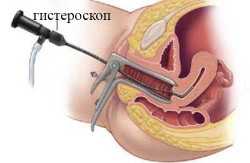
The control or diagnostic type of hysteroscopy is not a reason for the hospitalization of the patient, while the surgical type of procedure is carried out exclusively in the hospital.
Hysteroscopy - method requiring anesthetic. A lot of time the procedure does not take - from a quarter to half an hour. To see the neck of the uterus, the vagina «Reveal» Mirrors. With the help of specialized equipment, the specialist estimates the size of the uterus, expands the cervical canal to introduce a hysteroscope to the fallopian cavity. The device is connected in advance to a special system feeding liquid in the uterus. Doctor, moving a hysteroscope in the direction of the clockwise direction, can inspect the mouth of the uterine pipes, the appearance of the endometrium, in general, estimate the state of the uterine cavity.
Recovery period after hysteroscopy

Usually inspection using a hysteroscope does not cause any inconvenience to the patient. About the diagnostic procedure, for example, you can forget the next day. Observation of the doctor and rehabilitation patient do not need. This type of diagnosis is extremely rarely complicated by bleeding.
To restore the patient after the surgical procedure, the doctor belongs carefully: prescribes antibacterial drugs to prevent the development of bacterial infection, and also evaluates the character of blood allocated after blood surgery. The norm consider the moderate amount of discharge, besides, they must be short-term.
To stop pain in the first time after surgery, you can take analgesics - medicines that can be bought in a pharmacy without a recipe from the doctor (Analgin, Ibuprom, Baralgetas). Although, if the pain not very strong, it is better to refuse drugs - so the recovery process will go faster, and the woman will feel good in 2-3 days.
In the event that the patient suffered an operation to scraping the uterine cavity, the next few months, it should be protected from pregnancy by any ways. Ideal if conception occurs a year after surgery.
MPSEs draws their readers:
- If the doctor considers it necessary, after the uterus hysteroscopy, the abstinence period from sex can be 2-3 weeks;
- Tampons, tablets and candles for introduction into the vagina after the procedure is better to postpone away for a while;
- In the first days after visiting the gynecologist, hiking in the baths, saunas and pools are undesirable, and the bath is better to replace the shower.
These precautions are needed in order to prevent possible complications. In most cases, after 3 - 5 day after the procedure, the woman returns to the familiar lifestyle.
Common complications after the procedure
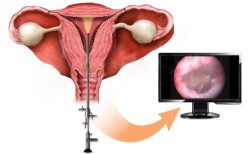
After removing a polyp or fibromatous node using hysteroscopy, a woman can face uterine bleeding. Especially often this happens if the technique of procedure for some reason was broken.
Symptoms Complications: Strong bleeding from the vagina more than 2 days after hysteroscopy. Normal postoperative allocations. To eliminate abundant bloody secretions, blood-resistant drugs and preparations that cut the muscles of the uterus will be prescribed.
Also, after the procedure, the patient may develop endometritis. This infectious pathology, when the mucous membrane of the uterus is inflamed.
Symptoms Complications: Enhance Temperature, Various painful sensations in the bottom of the abdomen, bloody, sometimes with an admixture of pus, vaginal discharge. Antibacterial and disinfecting treatment comes to the rescue.
The first after the procedure is very abundant menstrual bleeding is not a complication or the result of hysteroscopy. But if the isolation is purulent, painful and accompanied by a high temperature, you need to immediately consult a doctor!

